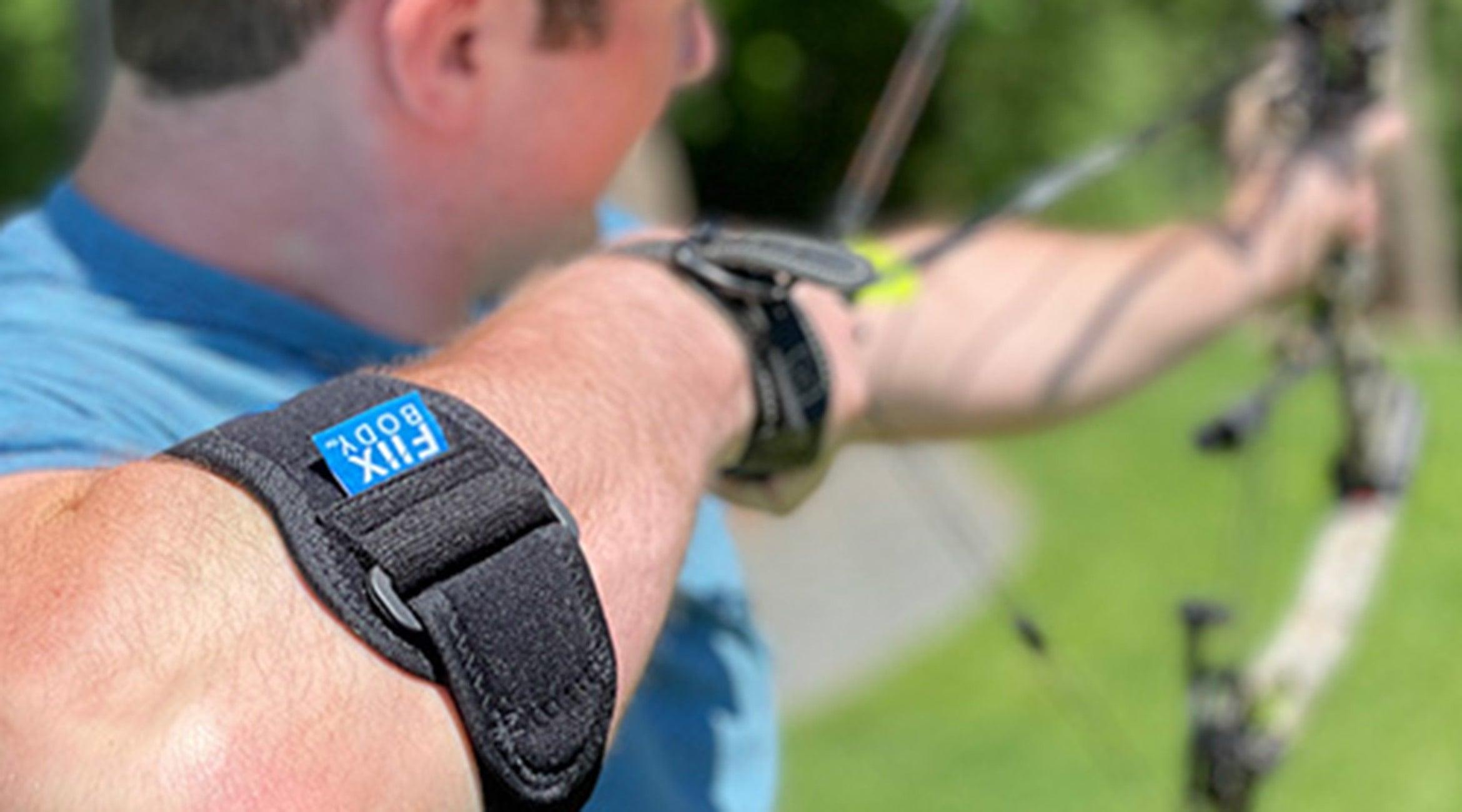Do tennis elbow splints work?
When it comes to pain, the natural human response is to avoid it, minimize it and do whatever it takes to get rid of it. While tolerance to pain can vary greatly among people, any chronic pain is debilitating – whether it’s a dull ache; a periodic sharp sensation or an on-and-off nagging injury.In the case of tennis elbow, pain can begin mildly, gradually and intermittently, but typically worsens over time. It starts interfering with daily activities, such as exercise, household chores and work (on a computer, at a construction site or on an assembly line), and remains persistent, so that eventually, sufferers must seek relief. If untreated, tennis elbow can make it difficult to turn a doorknob, hold a coffee cup, carry a briefcase or brush your teeth.
Various treatment options are available for tennis elbow – both over-the-counter and through healthcare professionals. One popular first step is to use a support – such as a strap, brace, splint or sleeve – to help the joint rest and heal. Logically, it makes sense to limit movement in a joint experiencing inflammation, but as it turns out, these supports ultimately may not facilitate healing, and may instead slow recovery. Let’s examine why tennis elbow splints don’t work.
Tennis elbow
Tennis elbow is an overuse injury caused by repetitive motions of the forearm and wrist that lead to inflammation of two forearm tendons – the extensor carpi radialis brevis and the extensor digitorum communis – that extend and stabilize the wrist as they anchor the muscles to your bones. In most cases, microscopic tears in the tendon where it attaches to the bone cause this inflammation; partial or full tears are much less common.Inflammation causes pain, swelling, warmth and redness resulting from the irritation or injury in the tendon. Diagnosis includes a physician’s exam where you are asked to perform basic tasks, and sometimes can include X-rays, an MRI scan or an EMG. In rare cases, a bone scan may be performed.
Tennis elbow affects 6.5 to 9.5 million people each year, typically ages 40-60, but not just tennis players. In fact, tennis players make up less than five percent of all reported cases. Anyone who performs repetitive arm movements is susceptible – such as golfers, fitness enthusiasts, DIY-ers, gamers, cooks, manufacturing workers, mechanics and more.
Baseball pitchers, hairdressers, scrapbookers, knitters and crocheters also can be prone to elbow pain. And some people may have a genetic predisposition to tennis elbow if they are born with tendons that are less durable.
Tennis elbow treatment challenges
Tendons, which are connective tissue that attach muscles to bones, are made of thick bands of collagen fibers, and have a tendency to break down, tear and degenerate over time. Tendons have poor circulation and reduced blood supply, which means they heal slowly and are at risk of not healing well or at all.Effective treatment for tennis elbow can take several months. However, the good news is that according to the American Academy of Orthopaedic Surgeons, 80 to 85 percent of tennis elbow cases improve after six months to one year of nonsurgical treatment.
One of the first treatment recommendations for tennis elbow is rest, along with ice and pain relievers like ibuprofen or acetaminophen. This can be difficult to adhere to if tennis elbow is caused by your work, where it may not be possible to take time off or change jobs. It also can be frustrating to give up recreational pastimes like sports or exercise to rest the arm.
Furthermore, this initial treatment plan provides temporary relief from pain but does not heal the tendon, so symptoms return again upon resumption of activity.
Another treatment option is to brace the elbow with splints, sleeves or straps to deliver external physical support that helps disperse forces that impact the injury site to reduce discomfort. These may help to alleviate pain temporarily, and can offer support if you have a significant tendon tear, and are still playing tennis or golf or are engaged in strenuous exertion and want to lower the risk of additional damage. But they shouldn’t be worn all the time or when you’re simply resting; they are best used as a supplemental, interim measure for tennis elbow.
Splints and braces don’t address the root cause of the problem, and instead simply function like a bandage. Just because the pain has been minimized doesn’t mean that the injury has healed. Because they don’t promote healing of the tendons, braces by themselves should not be used over a long period of time.
Why tennis elbow splints don't work
To promote healing, tendons need increased circulation, which boosts oxygen and healing properties. Additional blood flow to the tendon stimulates healing and the formation of new collagen and may help to reverse any degeneration.Tennis elbow splints and sleeves do not stimulate circulation, and thereby don’t encourage healing, which means that the injury becomes chronic. They should not be relied on as an effective treatment for several reasons:
- Immobilization – Splints, braces, tennis elbow straps and sleeves reduce movement at the elbow, so your muscles, tendons and the joint remain at rest. This results in lower circulation, which means less blood flow and oxygen to the tendon.
- Compression – If the brace or sleeve is tight, it compresses the blood vessels to the tendon and further impedes circulation and lymph flow.
- Adhesion formation – Gentle movement is necessary to help stimulate the repair process in an injury, and immobilization and compression can allow adhesions and scar tissue to form, which results in binding and restricting the muscles and tendons.
- Stagnation and degeneration – Ultimately, immobilizing braces and sleeves can lead to stagnation of healing and additional weakening or degeneration of the tendon.
An effective approach to tennis elbow that's better than splints
Instrument-assisted soft tissue mobilization (IASTM) is a proven clinical treatment that physical therapists have employed for more than a decade. In the case of tennis elbow, IASTM applies controlled microtrauma to the tendon to stimulate a local inflammatory response, which increases circulation, sends healing cells and oxygen to the site, breaks down adhesions and scar tissue and removes fascial restrictions.Together, this promotes cellular and tissue regeneration and collagen production, which alleviates pain, helps the tendon regain normal tensile strength and promotes functional restoration over time. Tennis elbow splints do not produce any response from the body to activate healing.
The Fiix Elbow replicates IASTM to directly treat the source of tennis elbow pain with a convenient, at-home treatment of 10 minutes per day, three times per week for eight weeks. This therapy is combined with strength and stretching exercises to boost circulation, stimulate collagen cross-linkage formation, help improve mobility and reduce risk of future injury. In comparison, tennis elbow splints need to be worn a lot longer everyday.
In Phase 2 trials, 100 percent of subjects reported a reduction in pain, along with a greater than 73% improvement in functional activities, with a 58% average increase in grip strength. You won't find any proven rest results like this for tennis elbow splints.
With the E5, tennis elbow sufferers save time and money, eliminate costly insurance deductibles and co-pays and benefit from a non-invasive, drug-free treatment that can help them stay active without pain.



Share:
Tennis elbow from DIY projects
How to Relieve Tennis Elbow Pain at Night